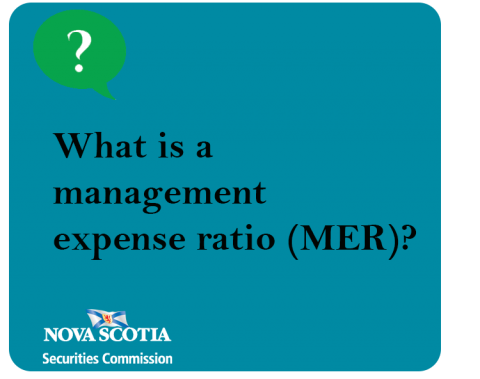Submitted by nsscadmin on

Our last two blog posts have focused on investment fees, specifically embedded commissions and deferred sales charges (DSC). In both posts we mentioned management expense ratios (MER). Apparently when we mentioned them we should have gone into greater detail about them, as that’s what investors have asked for this week.
An MER is a fee for management and operating costs paid by mutual funds to the mutual fund’s managers. Included in an MER are investment management fees, administrative costs of the fund, and manager and trailing commissions.
The management fee portion of the MER can pay for things like the cost to oversee the fund, hiring a portfolio manager to make fund decisions, or hiring other companies to assist in investment decisions. The operating costs can include things like accounting and admin fees, marketing, legal fees, audit fees, filings with securities regulators and taxes.
You can find the MER of a mutual fund in the fund facts document for the fund. It is listed as a percentage and typically ranges from 1-3 per cent, although it can be higher. The MER is paid indirectly by an investor and is a reduction from the fund’s assets and return.
For example, let’s say a mutual fund has a return of 6 percent and a MER of 1 per cent. At the end of the year your return on the fund in your statement is listed at 5 per cent.. The 1 per cent MER reduces your return.
Since an MER is taken from your return it reduces the amount of money your investments are making for you. This makes it a very important number to pay attention to when deciding on what funds you wish to invest in. Even a difference of one per cent can add up over time and greatly reduce your returns. However, funds with higher MER can also come with higher risk, and thus the chance at higher returns. Be sure to do your due diligence and assess the cost of the MER, the risk involved, the potential returns, and your financial goals before making any investment.
